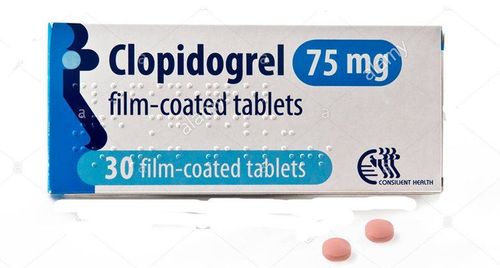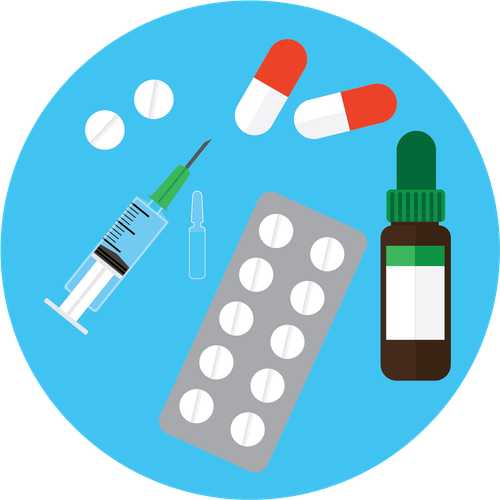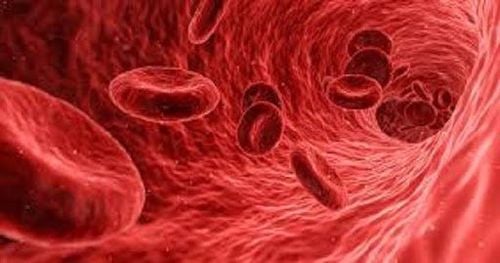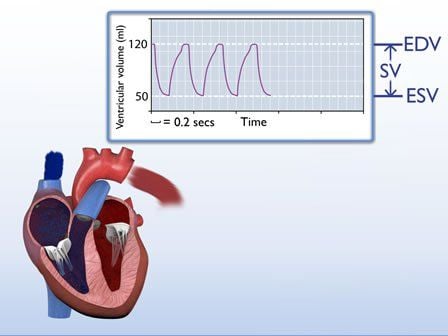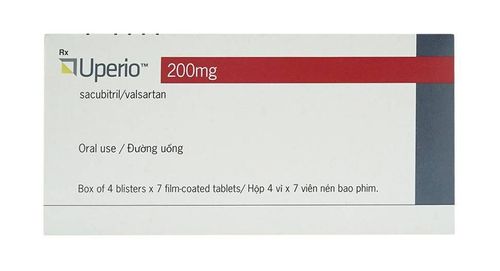This is an automatically translated article.
Hemodynamics plays a role in single-chamber pacing; Synchronized atrial-ventricular pacing, and frequency response pacing and hemodynamics in 3-chamber pacing for the treatment of heart failure. So what is hemodynamics? Let's find out more about this question right in the article below.
1. What is the concept of hemodynamics?
What is hemodynamics? Hemodynamics is known as the scientific study of the movement (also known as the flow) of blood along with biological and pathological quantities in the circulatory system, specifically as follows: heart: amount of blood pumped by the heart in one minute (l/min) Cardiac index: cardiac output / body area (l/min/m2) Heart rate and stroke volume: cardiac output expressed in frequency heart rate X stroke volume. In which preload, myocardial contractile force and afterload are the factors affecting stroke volume.
2. Learn important hemodynamic parameters
In cardiovascular resuscitation, hemodynamics plays an extremely important role, including the following hemodynamic indices:
2.1. Hemodynamics in single-chamber pacing In single-chamber pacing, hemodynamics plays an important role such as hemodynamic variation according to pacing frequency or before-after pacing. However, there are also many hemodynamic limitations: single-ventricular pacing without atrial systolic contribution reduces end-diastolic systolic volume, which will lead to limiting or decreasing CO and SV. lead to pacemaker syndrome.
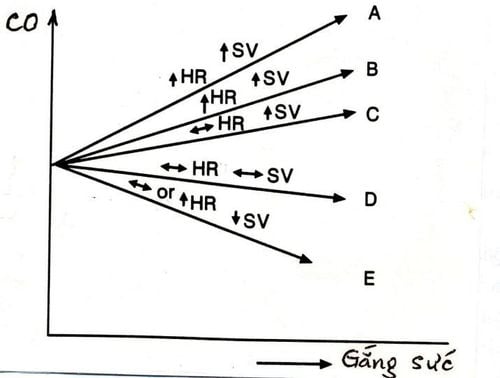
Các yếu tố ảnh hưởng đến CO
2.2 Hemodynamics in atrial-ventricular synchronous pacing with a contribution of about 30-35% of left ventricular end-diastolic blood volume, thereby leading to an increase in CO and SV, helping to maintain atrial synchronization - As well as best maintaining preload, CO increased 20% compared with VVI pacing. Contributes to the prevention of hemodynamically elevated venous pressure, as well as atrial pacing compared with ventricular pacing of the same rate.
2 . 3. Hemodynamic index in frequency-responsive pacing For this index, only AAI, DDD and VVI pacing modalities with impaired sinus node function need to be met.
2.4. Hemodynamics in 3-chamber pacing for heart failure Known to play a role in heart failure resynchronization, is the use of a 3-chamber TNT machine for the purpose of atrioventricular resynchronization and resynchronization. Synchronization of the two ventricles due to prolonged atrioventricular conduction or loss of contractility between the two ventricles due to bundle branch block, thereby helping to improve the hemodynamic status in patients with severe ST by increasing ventricular filling. , increase contractility, increase CO, CI, SV.
3. Hemodynamics in pediatric shock resuscitation by continuous cardiac output meter
Shock is a state of acute circulatory failure, the body cannot meet the needs of blood and oxygen. Shock will reduce tissue perfusion and stagnate metabolic products that are harmful to the body such as lactic acid, CO2. And if not treated promptly, shock can lead to permanent organ damage and death.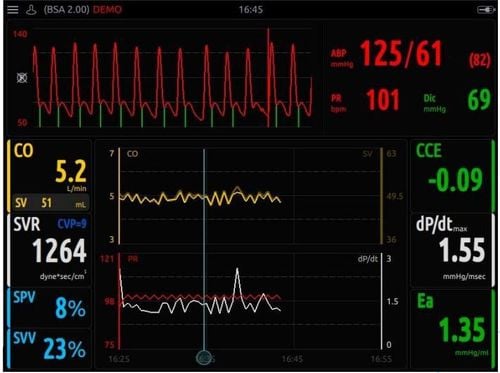
Ứng dụng phương pháp theo dõi cung lượng tim liên tục
Shock is divided into 3 main categories as follows:
Hypovolemic shock Distributive shock Cardiogenic shock In children, hypovolemic shock is very common and is mostly caused by burns and blood loss. , dehydration, diarrhea, .... Shock caused by blood distribution disorders is common in sepsis and anaphylaxis, often causing vasodilation, decreased peripheral resistance. Cardiogenic shock is less common in children and is often caused by damage in myocardial contractile function such as congenital heart disease, myocarditis, etc. When treating shock, the principle is to treat hypoxia in tissue, restore cardiac output, and control complications if any, as well as quickly find out the cause and treat. Cardiac output measurement in shock is essential because cardiac output provides an indication of the hemodynamics and myocardial blood supply, and cardiac output monitoring provides information about the progression of cardiac arrest. shock.
With the above information, hopefully, it will provide you with knowledge about hemodynamics as well as find yourself the answer to what is hemodynamics? If you still have questions, you can go to Vinmec International General Hospital for examination and specific answers from the doctor.
Vinmec International General Hospital is the address for examination, treatment and prevention of diseases. When performing the examination process at Vinmec, customers will be welcomed and used modern facilities and machinery along with perfect medical services under the guidance and advice of doctors. Good doctors, well-trained both at home and abroad.
Customers can directly go to Vinmec Health system nationwide to visit or contact the hotline for support.
Please dial HOTLINE for more information or register for an appointment HERE. Download MyVinmec app to make appointments faster and to manage your bookings easily.




